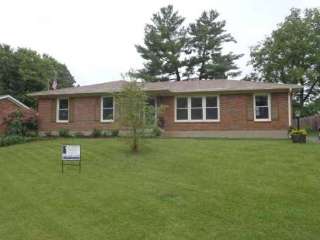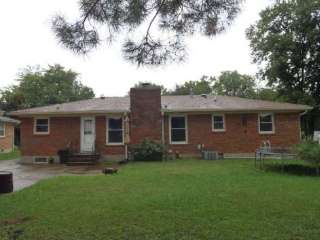
(502) 298-4758
3711 Trail Ridge Rd
Louisville KY 40241-6222
www.fulcrum-hi.com
Louisville KY 40241-6222
www.fulcrum-hi.com
Inspector: Kenton Graviss
License 101217, legacy HI-3016
Kentucky
Kentucky


Summary
| Client(s): | Satisfied Customer |
| Property address: | 789 City Street Louisville KY |
| Inspection date: | Sunday, March 3, 2052 |
This report published on Monday, September 18, 2023 3:29:29 PM EDT
This report is the exclusive property of this inspection company and the client(s) listed in the report title. Use of this report by any unauthorized persons is prohibited.



| Safety | Poses a safety hazard | |
| Major Defect | Correction likely involves a significant expense | |
| Repair/Replace | Recommend repairing or replacing | |
| Repair/Maintain | Recommend repair and/or maintenance | |
| Minor Defect | Correction likely involves only a minor expense | |
| Maintain | Recommend ongoing maintenance | |
| Evaluate | Recommend evaluation by a specialist | |
| Monitor | Recommend monitoring in the future | |
| Serviceable | Item or component is in serviceable condition | |
| Comment | For your information |
Attachments
InterNACHI_Code_of_Ethics.pdfInterNachi_Stds_of_Practice.pdf
Radon_Quick_Facts.pdf
Exterior and Foundation
2) 
 The rear exterior electrical outlet was exposed to the elements and could be a safety hazard. Recommend installing a weather proof cover to protect it.
The rear exterior electrical outlet was exposed to the elements and could be a safety hazard. Recommend installing a weather proof cover to protect it.
3)  The dryer vent was clogged with debris and requires cleaning out to avoid a safety hazard during drying operation.
The dryer vent was clogged with debris and requires cleaning out to avoid a safety hazard during drying operation.
4) 

 Thenexterior light by the rear door appeared to be missing a light bulb.
Thenexterior light by the rear door appeared to be missing a light bulb.
5)  The masonry (brick) veneer was cracked in one area . Where cracks or openings are exposed, water can enter the wall structure causing mold, fungal growth and structural damage. This is a conducive condition for wood-destroying organisms. Recommend that a qualified contractor repair as necessary. For example, by repointing mortar or replacing broken or missing masonry.
The masonry (brick) veneer was cracked in one area . Where cracks or openings are exposed, water can enter the wall structure causing mold, fungal growth and structural damage. This is a conducive condition for wood-destroying organisms. Recommend that a qualified contractor repair as necessary. For example, by repointing mortar or replacing broken or missing masonry.
6) 
 Moderate cracks (1/8 inch and less) were found in the foundation. This may be a structural concern or an indication that settlement is ongoing. The client should consider hiring qualified contractors and/or engineers as necessary for further evaluation if necessary. Such contractors may include:
Moderate cracks (1/8 inch and less) were found in the foundation. This may be a structural concern or an indication that settlement is ongoing. The client should consider hiring qualified contractors and/or engineers as necessary for further evaluation if necessary. Such contractors may include:
- Foundation repair contractors who may prescribe repairs, and will give cost estimates for such repairs
- Masonry contractors who repair and/or replace brick veneer
- Geotechnical engineers who attempt to determine if settlement is ongoing, and the cause of the settlement
- Structural engineers who determine if repairs are necessary, and prescribe those repairs
7)  Vegetation such as shrubs and/or bushes were in contact with or close to the building exterior. Vegetation can serve as a pathway for wood-destroying insects and can retain moisture against the exterior after it rains. This is a conducive condition for wood-destroying organisms. Recommend pruning, moving or removing vegetation as necessary to maintain at least 6 inches of space between it and the building exterior. A 1-foot clearance is better.
Vegetation such as shrubs and/or bushes were in contact with or close to the building exterior. Vegetation can serve as a pathway for wood-destroying insects and can retain moisture against the exterior after it rains. This is a conducive condition for wood-destroying organisms. Recommend pruning, moving or removing vegetation as necessary to maintain at least 6 inches of space between it and the building exterior. A 1-foot clearance is better.
Roof
9) 

 There was deterioration of some bricks on the back side of the chimney. Recommend applying a brick sealant to protect the deteriorated veneer.
There was deterioration of some bricks on the back side of the chimney. Recommend applying a brick sealant to protect the deteriorated veneer.
10) 

 Debris was present in some areas of the roof gutters. Recommend monitoring their accumulation and cleaning gutters as necessary to avoid drainage overflow.
Debris was present in some areas of the roof gutters. Recommend monitoring their accumulation and cleaning gutters as necessary to avoid drainage overflow.
Garage or Carport
12) 
 Firewood and plywood were stacked next to one side of the garage. This is conducive to insect infestation of the garage, as was discovered by a termite inspection conducted the same day and which will be reported on separately.
Firewood and plywood were stacked next to one side of the garage. This is conducive to insect infestation of the garage, as was discovered by a termite inspection conducted the same day and which will be reported on separately.
Heating, Ventilation and Air Condition (HVAC)
14) 

 The estimated useful life for most heat pumps and air conditioning condensing units is 10-15 years. This unit appeared to be this age and its useful lifespan and may need replacing or significant repairs at any time. Recommend budgeting for a replacement in the near future.
The estimated useful life for most heat pumps and air conditioning condensing units is 10-15 years. This unit appeared to be this age and its useful lifespan and may need replacing or significant repairs at any time. Recommend budgeting for a replacement in the near future.
15) 
 The refrigerant line insulation on the air conditioner was substandard and should be replaced.
The refrigerant line insulation on the air conditioner was substandard and should be replaced.
16) 
 The estimated useful life for most forced air furnaces is 15-20 years. This furnace appeared to be this age and its useful lifespan and may need replacing or significant repairs at any time. Recommend budgeting for a replacement in the near future.
The estimated useful life for most forced air furnaces is 15-20 years. This furnace appeared to be this age and its useful lifespan and may need replacing or significant repairs at any time. Recommend budgeting for a replacement in the near future.
Electric
18) 

 Neutral and ground wires did not appear to be bonded together at the main service panel. In the main service panel, neutrals and grounds should be connected (bonded) to each other and to the metal panel housing. This is a safety hazard for shock. Recommend that a qualified electrician evaluate and repair per standard building practices.
Neutral and ground wires did not appear to be bonded together at the main service panel. In the main service panel, neutrals and grounds should be connected (bonded) to each other and to the metal panel housing. This is a safety hazard for shock. Recommend that a qualified electrician evaluate and repair per standard building practices.
19) 

 One or more branch circuits with solid-strand aluminum wires were found. Problems due to expansion and contraction with this type of wiring can cause overheating at connections between the wire and devices such as switches and receptacles (outlets), or at splices. This is a potential fire hazard. The Consumer Products Safety Commission recommends either discontinuing use of circuits with aluminum wiring, removing the wiring, or that an electrician determine if copper wire can be pig-tailed onto the ends of the aluminum wire. A qualified electrician should evaluate the full electrical system and repair as necessary. For more information, visit:
One or more branch circuits with solid-strand aluminum wires were found. Problems due to expansion and contraction with this type of wiring can cause overheating at connections between the wire and devices such as switches and receptacles (outlets), or at splices. This is a potential fire hazard. The Consumer Products Safety Commission recommends either discontinuing use of circuits with aluminum wiring, removing the wiring, or that an electrician determine if copper wire can be pig-tailed onto the ends of the aluminum wire. A qualified electrician should evaluate the full electrical system and repair as necessary. For more information, visit:
https://www.reporthost.com/?ALWIRE1
https://www.reporthost.com/?ALWIRE2
https://www.reporthost.com/?ALWIRE1
https://www.reporthost.com/?ALWIRE2
20) 
 One or more slots 2,5,8,15,and 21 where circuit breakers are normally installed were open in the main panel. Energized equipment was exposed and is a shock hazard. Recommend that a qualified person install closure covers where missing.
One or more slots 2,5,8,15,and 21 where circuit breakers are normally installed were open in the main panel. Energized equipment was exposed and is a shock hazard. Recommend that a qualified person install closure covers where missing.
21) 
 No carbon monoxide alarms were visible. This is a potential safety hazard. Some states and/or municipalities require CO alarms to be installed for new construction and/or for homes being sold. Recommend installing approved CO alarms outside of each separate sleeping area in the immediate vicinity of the bedrooms on each level and in accordance with the manufacturer's recommendations. For more information, visit:
No carbon monoxide alarms were visible. This is a potential safety hazard. Some states and/or municipalities require CO alarms to be installed for new construction and/or for homes being sold. Recommend installing approved CO alarms outside of each separate sleeping area in the immediate vicinity of the bedrooms on each level and in accordance with the manufacturer's recommendations. For more information, visit:
https://www.reporthost.com/?COALRM
https://www.reporthost.com/?COALRM
22) 


 The main electrical service panel was rusted. Recommend replacement of the panel door or the entire service panel to avoid potential deterioration and safety concerns in the future.
The main electrical service panel was rusted. Recommend replacement of the panel door or the entire service panel to avoid potential deterioration and safety concerns in the future.
23) 
 Branch circuit wiring installed in buildings built prior to the mid 1980s is typically rated for a maximum temperature of only 60 degrees Celsius. This includes non-metallic sheathed (Romex) wiring, and both BX and AC metal-clad flexible wiring. Knob and tube wiring, typically installed in homes built prior to 1950, may be rated for even lower maximum temperatures. Newer electric fixtures including lighting and fans typically require wiring rated for 90 degrees Celsius. Connecting newer fixtures to older, 60-degree-rated wiring is a potential fire hazard. Repairs for such conditions may involve replacing the last few feet of wiring to newer fixtures with new 90-degree-rated wire, and installing a junction box to join the old and new wiring.
Branch circuit wiring installed in buildings built prior to the mid 1980s is typically rated for a maximum temperature of only 60 degrees Celsius. This includes non-metallic sheathed (Romex) wiring, and both BX and AC metal-clad flexible wiring. Knob and tube wiring, typically installed in homes built prior to 1950, may be rated for even lower maximum temperatures. Newer electric fixtures including lighting and fans typically require wiring rated for 90 degrees Celsius. Connecting newer fixtures to older, 60-degree-rated wiring is a potential fire hazard. Repairs for such conditions may involve replacing the last few feet of wiring to newer fixtures with new 90-degree-rated wire, and installing a junction box to join the old and new wiring.
It is beyond the scope of this inspection to determine if such incompatible components are installed, or to determine the extent to which they're installed. Based on the age of this building, the client should be aware of this safety hazard, both for existing fixtures and when planning to upgrade with newer fixtures. Consult with a qualified electrician for repairs as necessary.
It is beyond the scope of this inspection to determine if such incompatible components are installed, or to determine the extent to which they're installed. Based on the age of this building, the client should be aware of this safety hazard, both for existing fixtures and when planning to upgrade with newer fixtures. Consult with a qualified electrician for repairs as necessary.
24) 
 The legend for circuit breakers or fuses in the main panel was missing, incomplete, and confusing. This is a potential shock or fire hazard in the event of an emergency when power needs to be turned off. Recommend correcting the legend so it's accurate, complete and legible. Evaluation by a qualified electrician may be necessary.
The legend for circuit breakers or fuses in the main panel was missing, incomplete, and confusing. This is a potential shock or fire hazard in the event of an emergency when power needs to be turned off. Recommend correcting the legend so it's accurate, complete and legible. Evaluation by a qualified electrician may be necessary.
Water Heater
26) 
 The water heater did not have earthquake straps or struts installed. This is a potential safety hazard in the event of an earthquake due to the risk of the water heater tipping over, gas lines breaking if it's gas-fired, or electric wiring being damaged if powered by electricity. Leaks can also occur in water-supply pipes. Recommend that a qualified person install earthquake straps or struts as necessary and per standard building practices.
The water heater did not have earthquake straps or struts installed. This is a potential safety hazard in the event of an earthquake due to the risk of the water heater tipping over, gas lines breaking if it's gas-fired, or electric wiring being damaged if powered by electricity. Leaks can also occur in water-supply pipes. Recommend that a qualified person install earthquake straps or struts as necessary and per standard building practices.
27) 
 The estimated useful life for most water heaters is 8-12 years. This water heater appeared to be near this age and may need replacing at any time. Recommend budgeting for a replacement in the near future, or considering replacement now before any leaks occur. The client should be aware that significant flooding can occur if the water heater fails. If not replaced now, consider having a qualified person install a catch pan and drain or a water alarm to help prevent damage if water does leak.
The estimated useful life for most water heaters is 8-12 years. This water heater appeared to be near this age and may need replacing at any time. Recommend budgeting for a replacement in the near future, or considering replacement now before any leaks occur. The client should be aware that significant flooding can occur if the water heater fails. If not replaced now, consider having a qualified person install a catch pan and drain or a water alarm to help prevent damage if water does leak.
Basement
29) 
 Guardrails on the basement stairs with drop-offs higher than 30 inches had gaps that were too large. This poses a safety hazard for children (e.g. falling, getting stuck in railing). Guardrails should not have gaps or voids that allow passage of a sphere equal to or greater than 4 inches in diameter, or 6 inches in diameter at triangular spaces between stair edges and guardrails. Recommend that a qualified contractor repair or replace guardrails per standard building practices.
Guardrails on the basement stairs with drop-offs higher than 30 inches had gaps that were too large. This poses a safety hazard for children (e.g. falling, getting stuck in railing). Guardrails should not have gaps or voids that allow passage of a sphere equal to or greater than 4 inches in diameter, or 6 inches in diameter at triangular spaces between stair edges and guardrails. Recommend that a qualified contractor repair or replace guardrails per standard building practices.
30) 
 The handrail on the basement stairs was warped and a little wobbly. This is a safety hazard. Recommend that a qualified person repair or replace as necessary.
The handrail on the basement stairs was warped and a little wobbly. This is a safety hazard. Recommend that a qualified person repair or replace as necessary.
31) 
 The only entrance/exit to the basement appeared to be the basement stairs. While this is common in older homes, modern standards require a secondary escape for use in the event of fire or an emergency. Such entrances/exits should allow entry by emergency personnel and their equipment. It is beyond the scope of this inspection to verify compliance with the current codes, and codes are generally not retroactive. Consult with a window/door contractor and/or the local municipal building officials regarding egress guidelines.
The only entrance/exit to the basement appeared to be the basement stairs. While this is common in older homes, modern standards require a secondary escape for use in the event of fire or an emergency. Such entrances/exits should allow entry by emergency personnel and their equipment. It is beyond the scope of this inspection to verify compliance with the current codes, and codes are generally not retroactive. Consult with a window/door contractor and/or the local municipal building officials regarding egress guidelines.
32) 

 Evidence of prior water intrusion was found around the basement perimeter where cement sealing was present. The presence of the pump is another indication. Other examples, water stains or rust at support post bases, efflorescence on the foundation, etc. Ideally water should not intrude into the basement. Accumulated water is a conducive condition for wood-destroying organisms and should not be present in the basement. Recommend reviewing any disclosure statements available and ask the property owner about past accumulation of water in the basement.
Evidence of prior water intrusion was found around the basement perimeter where cement sealing was present. The presence of the pump is another indication. Other examples, water stains or rust at support post bases, efflorescence on the foundation, etc. Ideally water should not intrude into the basement. Accumulated water is a conducive condition for wood-destroying organisms and should not be present in the basement. Recommend reviewing any disclosure statements available and ask the property owner about past accumulation of water in the basement.
The basement should be monitored in the future for accumulated water, especially after heavy and/or prolonged periods of rain. If water is found to accumulate, then recommend that a qualified contractor who specializes in drainage issues evaluate and repair as necessary. Typical repairs for preventing water from accumulating in basements include:
The basement should be monitored in the future for accumulated water, especially after heavy and/or prolonged periods of rain. If water is found to accumulate, then recommend that a qualified contractor who specializes in drainage issues evaluate and repair as necessary. Typical repairs for preventing water from accumulating in basements include:
- Repairing, installing or improving rain run-off systems (gutters, downspouts and extensions or drain lines)
- Improving perimeter grading
- Repairing, installing or improving underground footing and/or curtain drains
Crawl Space
34) 

 Evidence of prior water intrusion or accumulation was found in one or more sections of the crawl space. For example, sediment stains and efflorescence on the foundation. Accumulated water is a conducive condition for wood-destroying organisms and should not be present in the crawl space. Recommend that the client review any disclosure statements available and ask the property owner about past accumulation of water in the crawl space. The crawl space should be monitored in the future for accumulated water, especially after heavy and/or prolonged periods of rain. If water is found to accumulate, then recommend that a qualified contractor who specializes in drainage issues evaluate and repair as necessary. Typical repairs for preventing water from accumulating in crawl spaces include:
Evidence of prior water intrusion or accumulation was found in one or more sections of the crawl space. For example, sediment stains and efflorescence on the foundation. Accumulated water is a conducive condition for wood-destroying organisms and should not be present in the crawl space. Recommend that the client review any disclosure statements available and ask the property owner about past accumulation of water in the crawl space. The crawl space should be monitored in the future for accumulated water, especially after heavy and/or prolonged periods of rain. If water is found to accumulate, then recommend that a qualified contractor who specializes in drainage issues evaluate and repair as necessary. Typical repairs for preventing water from accumulating in crawl spaces include:
- Repairing, installing or improving rain run-off systems (gutters, downspouts and extensions or drain lines)
- Improving perimeter grading
- Repairing, installing or improving underground footing and/or curtain drains
35) 
 Foundation was cracked from the crack observed on the exterior. Recommend having a professional treat and seal the crack to prevent water and insect intrusions.
Foundation was cracked from the crack observed on the exterior. Recommend having a professional treat and seal the crack to prevent water and insect intrusions.
Plumbing / Fuel Systems
37) 
 Based on visible components or information provided to the inspector, this property appeared to have a private sewage disposal (septic) system. These are specialty systems and are excluded from this inspection. Comments in this report related to this system are made as a courtesy only and are not meant to be a substitute for a full evaluation by a qualified specialist. Generally, septic tanks should be pumped and inspected every 3 years. Depending on the type of system and municipal regulations, inspection and maintenance may be required more frequently, often annually. Recommend the following:
Based on visible components or information provided to the inspector, this property appeared to have a private sewage disposal (septic) system. These are specialty systems and are excluded from this inspection. Comments in this report related to this system are made as a courtesy only and are not meant to be a substitute for a full evaluation by a qualified specialist. Generally, septic tanks should be pumped and inspected every 3 years. Depending on the type of system and municipal regulations, inspection and maintenance may be required more frequently, often annually. Recommend the following:
https://www.reporthost.com/?SEPTIC
- Consult with the property owner about this system's maintenance and repair history
- Review any documentation available for this system
- Review inspection and maintenance requirements for this system
- That a qualified specialist evaluate, perform maintenance and make repairs if necessary
https://www.reporthost.com/?SEPTIC
38) 
 No battery backup system was found for the sump pump. If the power goes out during heavy rains, the sump pump won't be able to eliminate accumulated water. Consider installing a battery backup system for the sump pump.
No battery backup system was found for the sump pump. If the power goes out during heavy rains, the sump pump won't be able to eliminate accumulated water. Consider installing a battery backup system for the sump pump.
Bathrooms, Laundry and Sinks
41) 

 The closet floor of the hall bathroom was substandard. Recommend repairing or replacing it.
The closet floor of the hall bathroom was substandard. Recommend repairing or replacing it.
Fireplaces, Chimneys and Flues
44)  The brick chimney was deteriorated. For example, loose or missing mortar, cracked, broken, loose or spalled bricks. Loose bricks can pose a safety hazard, and deteriorated masonry can allow water to infiltrate the chimney structure and cause further damage. Recommend that a qualified contractor repair as necessary.
The brick chimney was deteriorated. For example, loose or missing mortar, cracked, broken, loose or spalled bricks. Loose bricks can pose a safety hazard, and deteriorated masonry can allow water to infiltrate the chimney structure and cause further damage. Recommend that a qualified contractor repair as necessary.
Interior, Doors and Windows
46) 
 A wall outlet was uncovered in one of the bedrooms. Recommend installing a cover for safety and/or repairing as necessary for operation.
A wall outlet was uncovered in one of the bedrooms. Recommend installing a cover for safety and/or repairing as necessary for operation.
Attic and Roof Structure
48) 
 The trim around the attic hatch was loose on one side. Recommend having it repaired or replaced up to modern construction standards.
The trim around the attic hatch was loose on one side. Recommend having it repaired or replaced up to modern construction standards.
49)  The attic access hatch had no weatherstripping. Weatherstripping should be installed around hatches or doors as necessary to prevent heated interior air from entering the attic. For more information, visit:
The attic access hatch had no weatherstripping. Weatherstripping should be installed around hatches or doors as necessary to prevent heated interior air from entering the attic. For more information, visit:
https://www.reporthost.com/?ATTACC
https://www.reporthost.com/?ATTACC
50) 
 One area of the roofing had what appeared to be different planking from the rest of the roof. This may be an area of past water damage that had been repaired. Recommend asking the owner about the history of roof leaks.
One area of the roofing had what appeared to be different planking from the rest of the roof. This may be an area of past water damage that had been repaired. Recommend asking the owner about the history of roof leaks.
